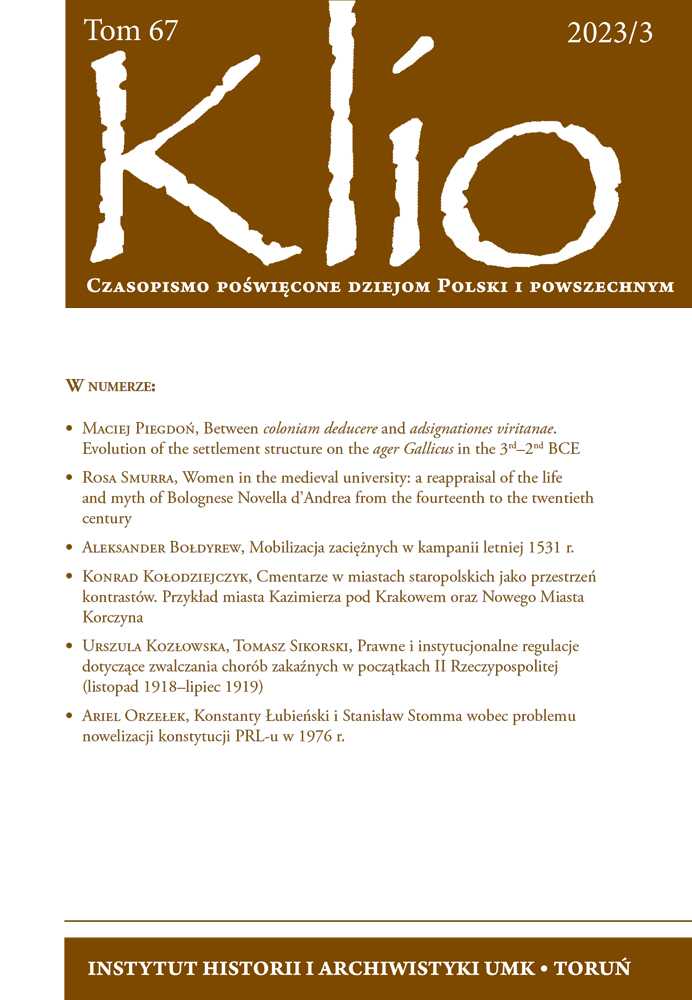Between coloniam deducere and adsignationes viritanae
Evolution of the settlement structure
on the ager Gallicus in the 3rd–2nd BCE
Between coloniam deducere and adsignationes viritanae
Evolution of the settlement structure
on the ager Gallicus in the 3rd–2nd BCE
Author(s): Maciej PiegdońSubject(s): Political history, Social history, Ancient World
Published by: Wydawnictwo Naukowe Uniwersytetu Mikołaja Kopernika
Keywords: conciliabula; fora; vici; pagi; praefecturae;
Summary/Abstract: The displacement of the population from the lands under the control of Rome to the Adriatic Sea was based on two models. One of them was colonization – i.e. sending organized groups by Rome under the leadership of triumvirs, whose aim was to organize a colony on ager publicus. The second was the placement of individual settlers on the ager publicus by the decemvirs, without the decision to found a colony. This did not mean abandoning the idea to establish a settlement. In order to help the community function – e.g. to conduct trade, settle disputes and due to their obligations towards the state (taxes, recruitment) – centers such as fora, conciliabula, vici, and pagi districts sprung up, which over time (2nd and 1st centuries BC) evolved into large urban settlements such as coloniesand finally municipia. The role of these small structures in maintaining the conquered areas in Italy under Roman rule in the 3rd century BC is undeniable.
Journal: Klio. Czasopismo poświęcone dziejom Polski i powszechnym
- Issue Year: 67/2023
- Issue No: 3
- Page Range: 3-32
- Page Count: 30
- Language: English

